Art World
Meet 7 Power Players Remaking the Cultural Landscape of the Middle East
These artists, curators, and writers are shaping the conversation about art in the Middle East—and soon, you'll be seeing them everywhere.
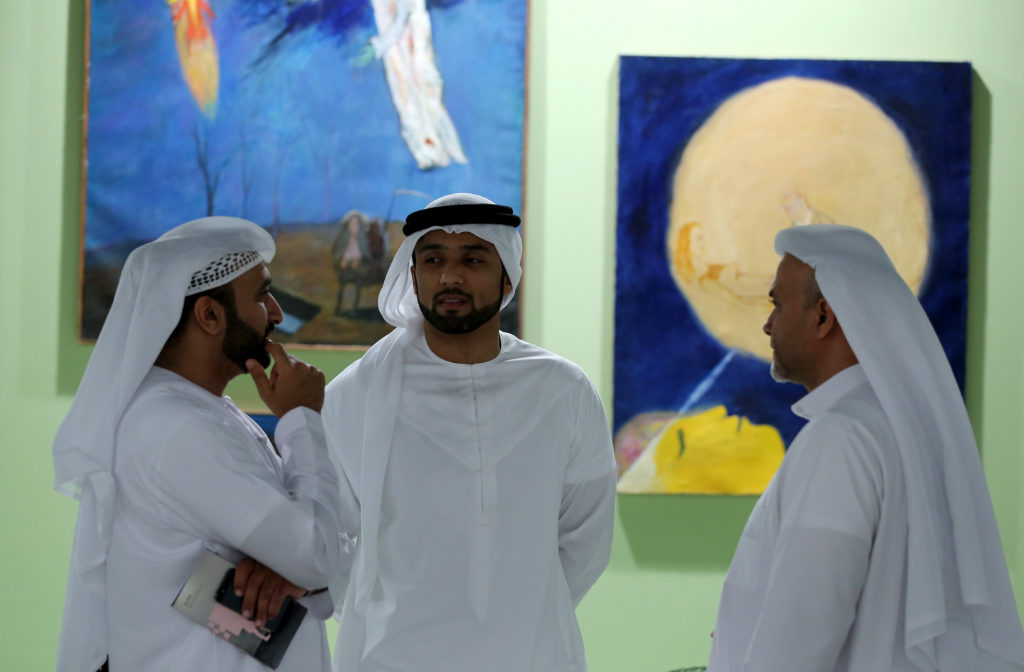
These artists, curators, and writers are shaping the conversation about art in the Middle East—and soon, you'll be seeing them everywhere.

Arsalan Mohammad

![]()
The Middle East has seen a considerable expansion of cultural infrastructure over the past decade. There’s the flat-out commercialism of Dubai, the rediscovery and exposure of Iranian Modern art, and, most recently, the surprisingly dynamic cultural renaissance in Saudi Arabia.
Trying to get up to speed with the changing landscape? We’ve rounded up seven of the region’s most influential players who are, in their own ways, shaping the narratives and ideas driving the Middle East’s art scene into the future.
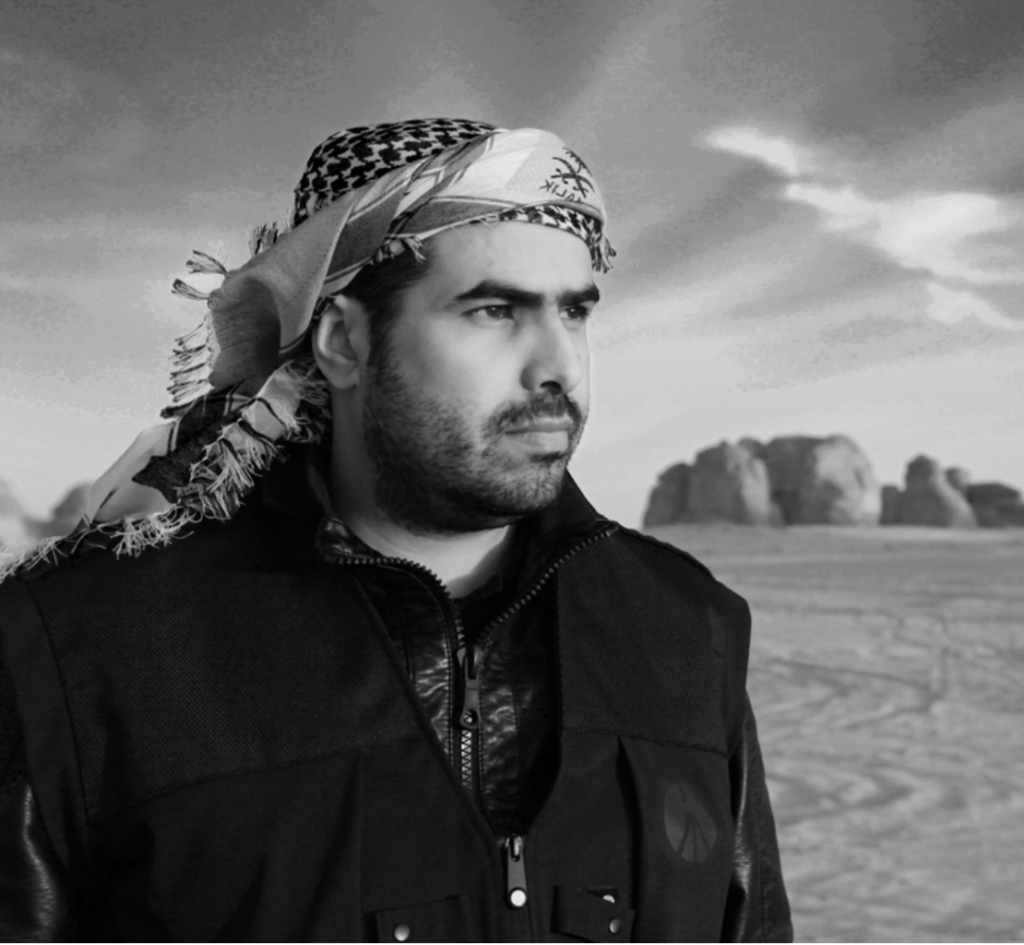
Ahmed Mater, photo courtesy of the artist.
Who he is: An internationally acclaimed former radiologist turned artist based in Mecca. His practice explores the rapid pace of change—for better and worse—in Saudi Arabia.
Why you should pay attention: Mater was recently appointed director of the Misk Art Institute, a new arts-focused initiative that is part of reformist Crown Prince Mohammed Bin Salman’s Vision 2030 development strategy. It was a notable appointment given the lack of artists holding significant positions in the Middle East and indicates a willingness on the part of authorities to welcome artistic activity following decades of repression. The institute has already organized exhibitions of work by Arab artists in Washington DC, Los Angeles, Dubai, and London.
On the horizon: The Misk Art Institute is planning brick-and-mortar art centers in Riyadh and Abha, as well as cultural programs to promote art across the Middle East, including public art commissions, exhibitions, festivals, and competitions.
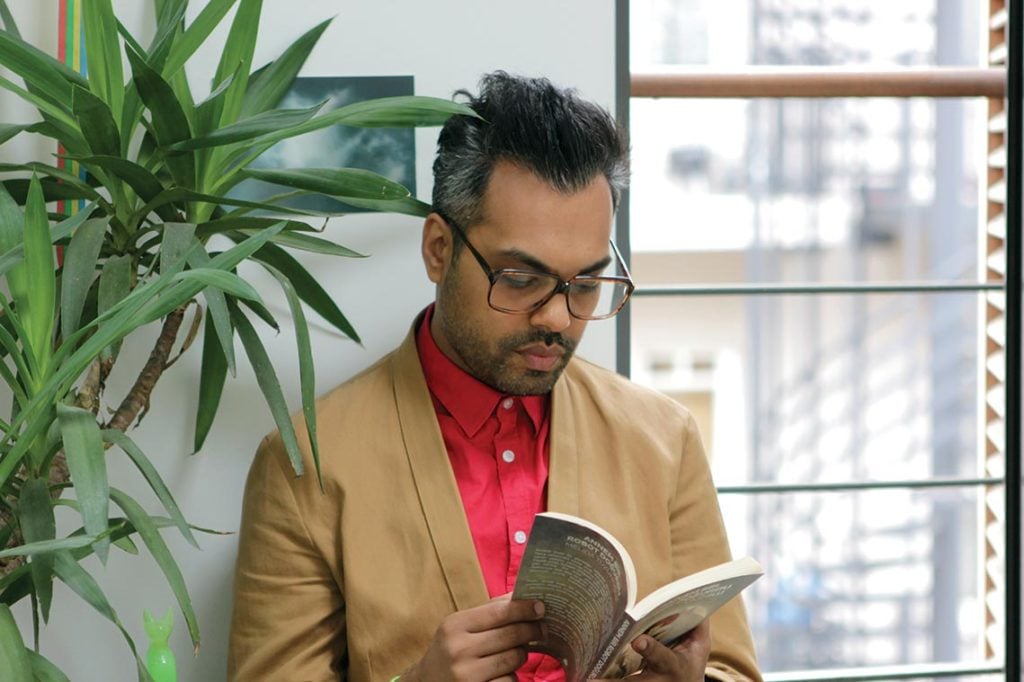
Shumon Basar, photo: Begum Goktas.
Who he is: The writer, editor, and curator is the author of The Age of Earthquakes: A Guide to the Extreme Present, a book on the digital era co-written with Douglas Coupland and Hans Ulrich Obrist. He is also the editor of books including Cities from Zero and Hans Ulrich Obrist: Interviews, Volume 2 and the commissioner of Art Dubai’s Global Art Forum, an annual jamboree of radical ideas and performative panel discussions.
Why you should pay attention: As part of the new curatorial council of Art Jameel, the rapidly expanding Saudi art foundation that’s opening vast new spaces in Jeddah and Dubai, Basar is actively engaging with emerging artists from Saudi Arabia and the wider region.
On the horizon: As well as his work with Art Jameel, Basar is collaborating once again with Douglas Coupland and Hans Ulrich Obrist on the sequel to their last book, The Age of Earthquakes. “It’s going to look at the evolution of the individual in our burgeoning era of data capitalism,” he tells artnet News. “What we’re calling The Extreme Self.”
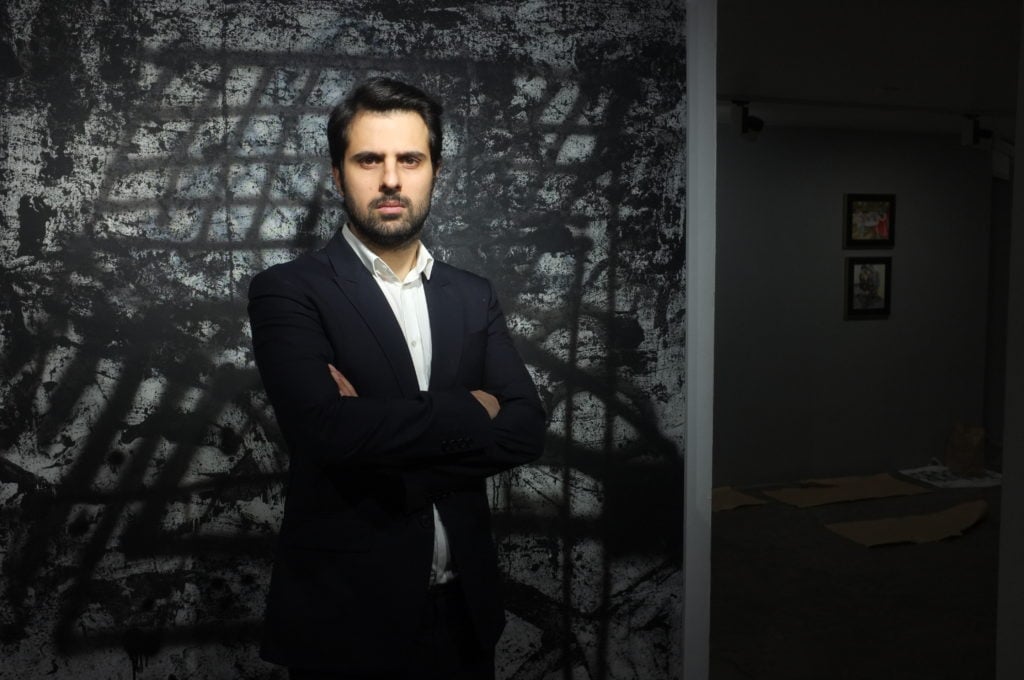
Hormoz Hematian, photo: Alborz Kazemi.
Who he is: The founder and director of Tehran’s Dastan Gallery, which opened in 2012 and is one of the city’s most dynamic art spaces. Hematian, a former engineer, is proactively promoting contemporary Iranian art at his Tehran spaces and a punishing schedule of global art fairs.
Why you should pay attention: Dastan Gallery has evolved from a makeshift space in Hematian’s former offices to a dynamic network of two permanent spaces (Dastan’s Basement and Dastan +2) and two semi-permanent spaces (the Electric Room and V-Gallery). But he is also working hard to make an impression on the global art fair circuit. So far this year, he has participated in Art Dubai and Art Basel Hong Kong.
On the horizon: Faced with the perpetual challenge of Tehran’s unreliable and chaotic infrastructure, Hematian plans on expanding the gallery’s research and publication team, building a dedicated curatorial team, and developing further international collaborations. This month, he will also re-open his Electric Room pop-up in Tehran, which in the past showcased a colossal “50 projects in 50 weeks” series of experimental and site-specific projects. In May, he will present work by the late satirist Ardeshir Mohasses at Frieze New York.
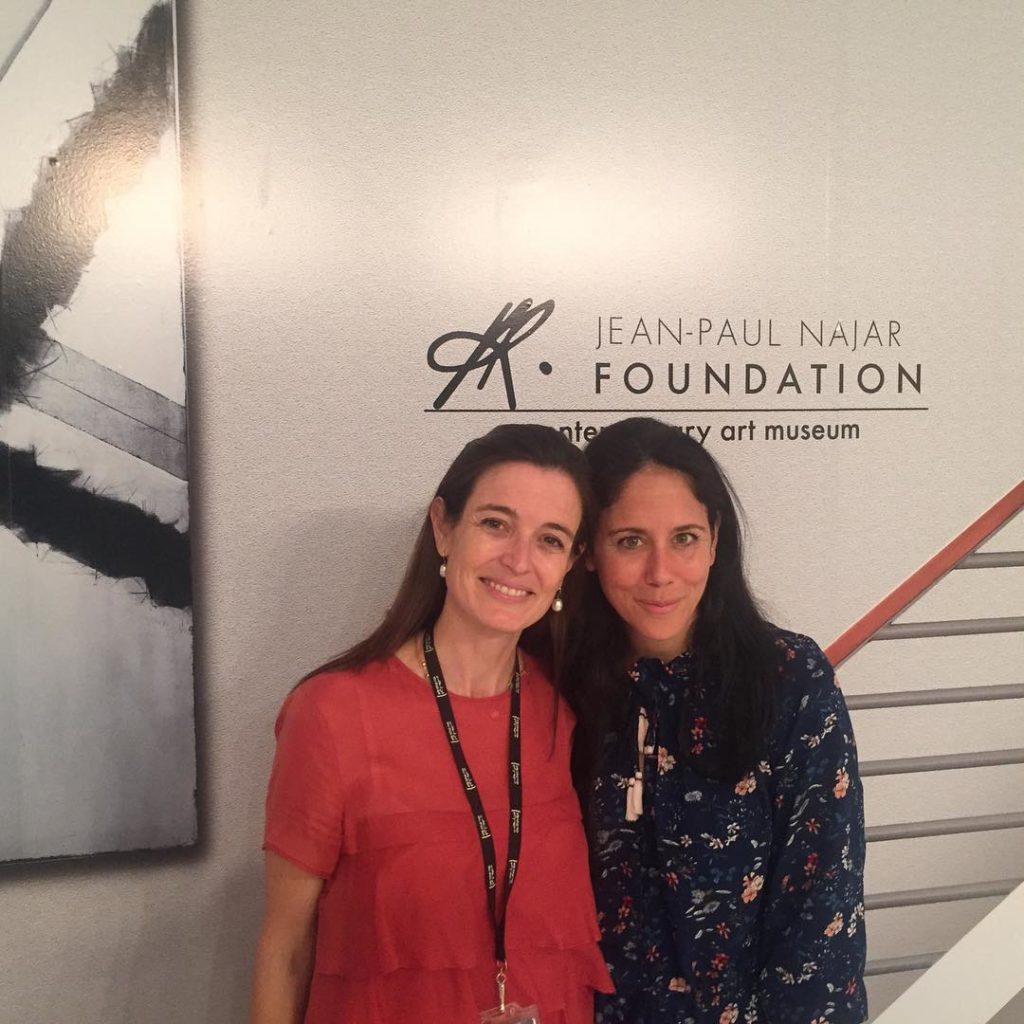
Dyala Nusseibeh (at right), at the Abu Dhabi Art Fair, 2016 via Instagram.
Who she is: The former director of the Art International fair in Istanbul and daughter of United Arab Emirates minister of state Zaki Nusseibeh. Last year, Dyala Nusseibeh became the first official director of the Abu Dhabi Art fair.
Why you should pay attention: Nusseibeh hit the ground running in Abu Dhabi, immediately announcing the first edition of Galleries Week, a collaboration between Abu Dhabi Art and Warehouse421 that invited six galleries to exhibit affordable art works in a pop-up venue in Abu Dhabi. Reshaping the fair to bring in a more appealing and dynamic selection of galleries and actively forging links with local and international art professionals have made the fair, in its ninth year, a serious rival to neighboring emirate’s Art Dubai.
On the horizon: This year, Nusseibeh is launching a new series of monthly gallery shows in Abu Dhabi, which began last month with a show by Jeddah’s Athr Gallery, to be followed by Dubai’s Meem Gallery on April 24. Nusseibeh is also commissioning artists to create site-specific works in three historic sites in the city of Al Ain in Abu Dhabi, to be unveiled in November at the Jahili Fort, Al Ain Oasis, and Qasr Al Muwaiji. She also plans to continue a program in which three emerging artists are mentored by an established UAE artist. Finally, she plans to launch a series of curated shows under the Abu Dhabi Art banner, running from beyond the fair in November into 2019.
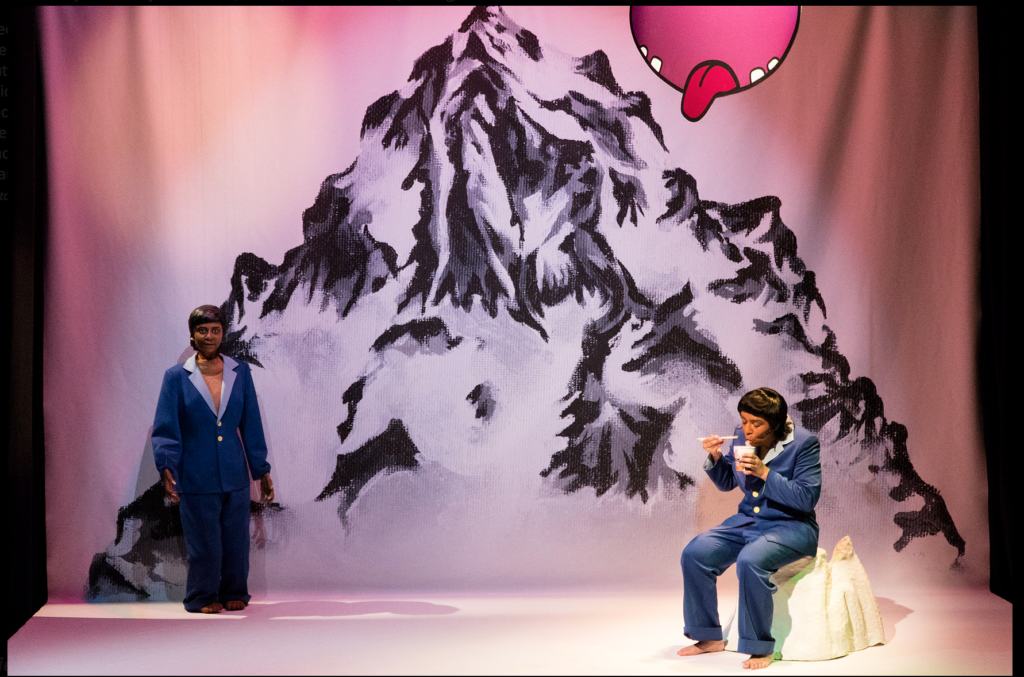
Monira Al Qadiri’s “Feeling Dubbing.” Courtesy of the artist.
Who she is: This Kuwaiti, Senegal-born, Japan-educated visual artist wittily explores the minefield of gender identities, the pervasive spiritual toxicity of petrocultures, and possible futures (such as “Arabfuturism,” a concept developed by the writer Sophia al-Maria). She is also part of the dynamic Gulf artist collective GCC.
Why you should pay attention: Her Amorphous Solid Ghost (2017)—a sculpture of oil drill heads using iridescent Murano glass—pointedly comments on wealth, energy generation, and its cultural legacy in the Arab world. She also made the 2017 video The Craft, which deals with an eclectic and ambitious mix of themes, including, in her words, “futuristic architecture, popular culture, dream readings, junk food, alien abductions, geopolitics, international diplomacy, war and peace.”
On the horizon: Al Qadiri has just been named as Abu Dhabi Art’s next commissioned artist and will provide works for the visual campaign of the 2018 fair.
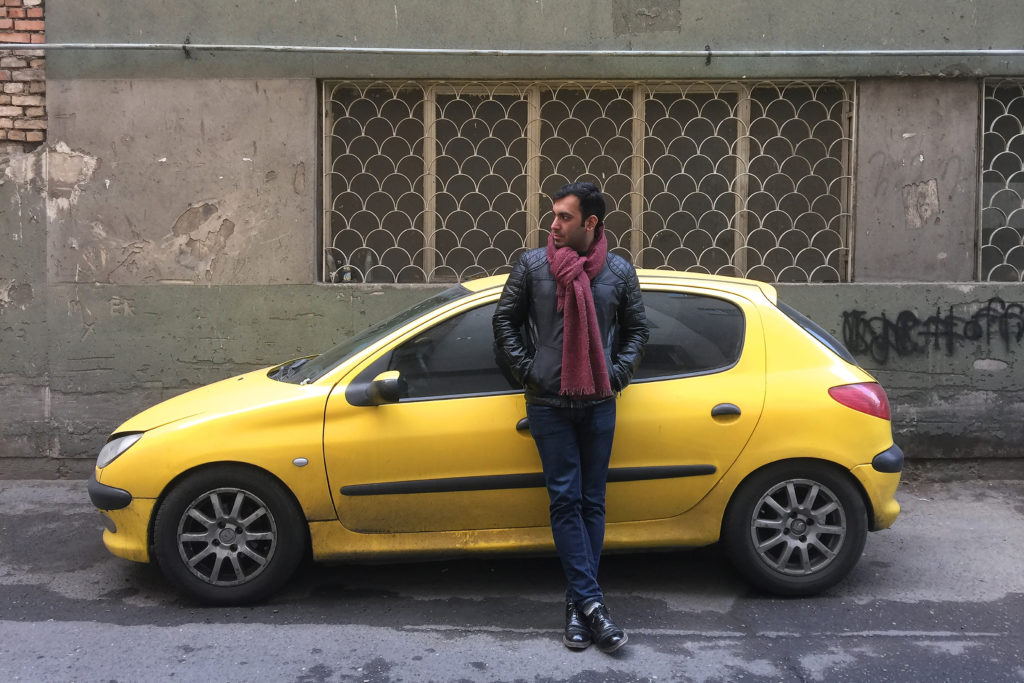
Ali Bakhtiari, courtesy of Ali Bakhtiari.
Who he is: The curator at the heart of Tehran’s Modern and contemporary art scene, Bakhtiari is an industrious dynamo who is connected to pretty much every gallery, artist, and dealer of consequence in the Iranian capital. He founded the art publication outfit ABBookness in 2011, the first Middle Eastern initiative specializing in artist books and multiples. He has also published books on Iranian art, pop culture, and cinema.
Why you should pay attention: Bakhtiari curated the landmark exhibition “Karnameh-Visual Culture of Iranian Children 1950-1980” with Peyman Pourhossein and Yashar Samimi Mofakham for the Tehran Museum of Contemporary Art in 2016, which, with its use of a vast archive of illustrated children’s books, introduced a new style of museum curating to the Iranian contemporary scene. Bakhtiari has also curated “IRAN:RPM” at the Saatchi Gallery in London.
On the horizon: Bakhtiari is currently editing a major monograph on the veteran artist Parvaneh Etemadi’s life and work, due for publication in 2019, alongside a major retrospective of the artist’s career.
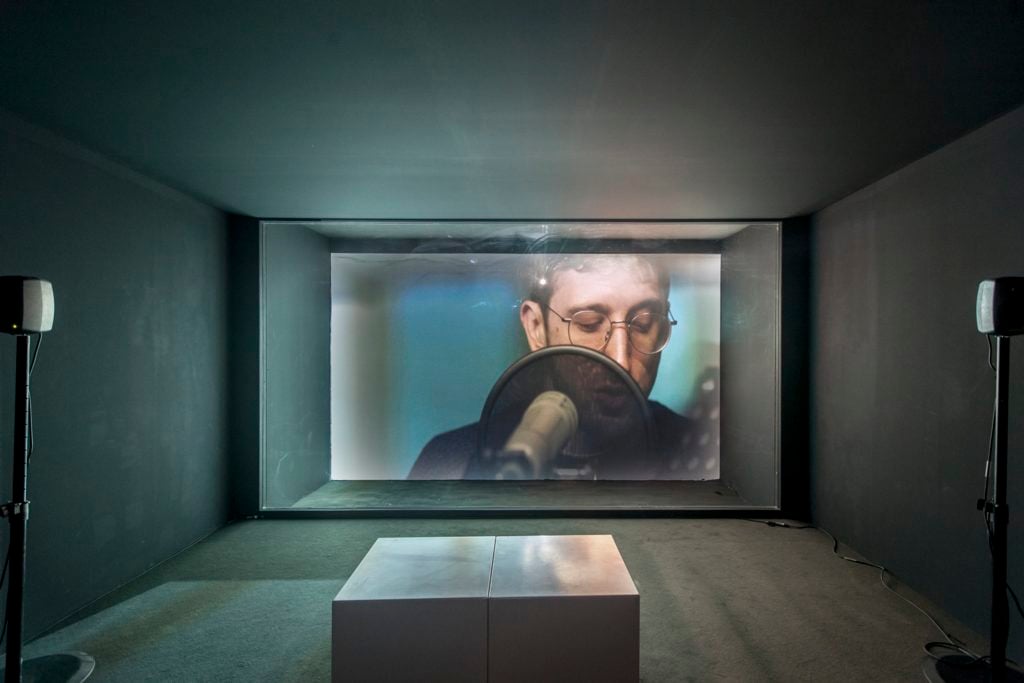
Lawrence Abu Hamdan’s Walled Unwalled (2018). Courtesy of Photo Solutions.
Who he is: The Jordan-born artist’s investigations into the ways audio can drive politics and forensics evolved out of his former life as a musician. His audio works have been used as evidence at the UK Asylum and Immigration Tribunal and as advocacy tools for Amnesty International and Defence for Children International. His work has been featured in exhibitions at London’s Whitechapel Gallery, New York’s New Museum, and Stockholm’s Moderna Museet. He won the €25,000 Nam June Paik Award in 2016 for his exhibition “Earshot,” a ballistic investigation into the 2014 shooting of two teenagers in the West Bank by Israeli soldiers, presented as an installation that included acoustic analysis, blending artwork and forensic evidence.
Why you should pay attention: Abu Hamdan also won the 2018 Abraaj Group Art Prize at this year’s Art Dubai fair. One of the biggest art prizes in the world, Abu Hamdan presented the video piece Walled, Unwalled, in which a glass screen displayed narratives relating to recent legal cases in which walls played a crucial role.
On the horizon: Abu Hamdan’s profile is set to expand considerably in coming months. The topicality of his work, its accessibility, and its political and social themes make him one of the most in-demand artists with roots in the Middle East. This year, he will be presenting new work at the Chisenhale Gallery in London and the Hammer Museum in Los Angeles, all while working on several other new projects.